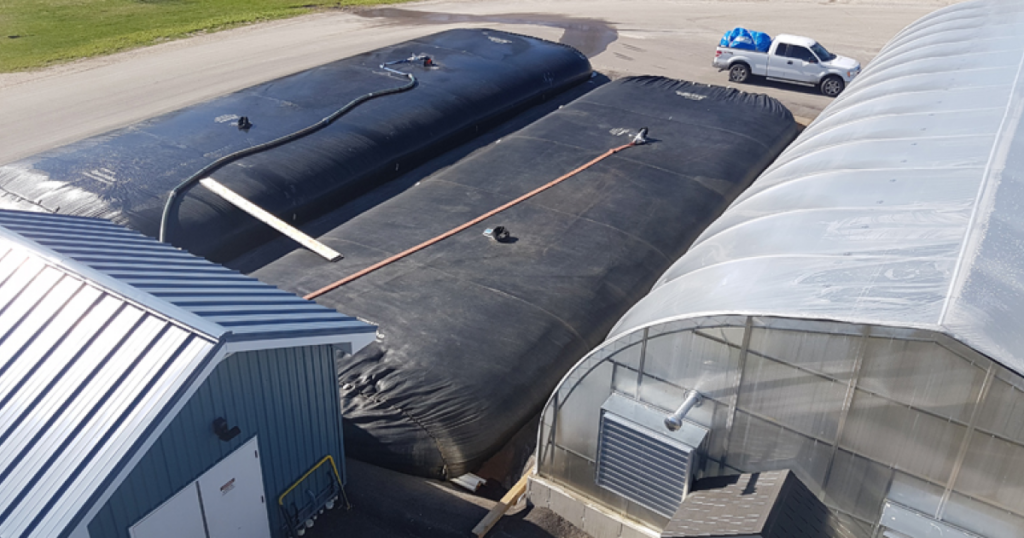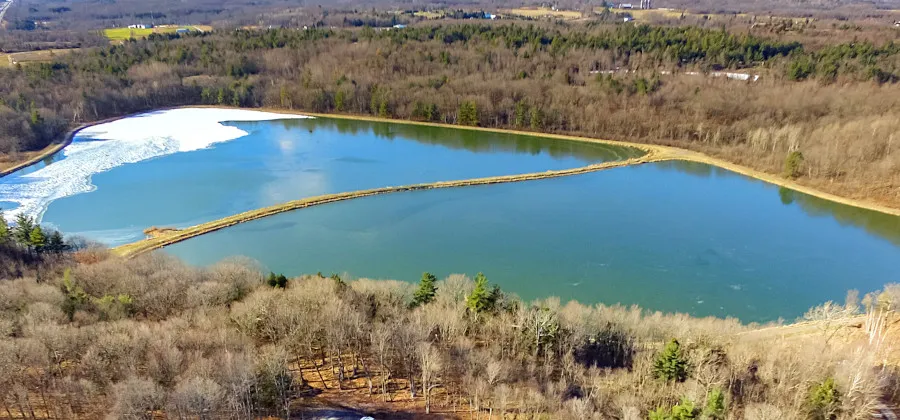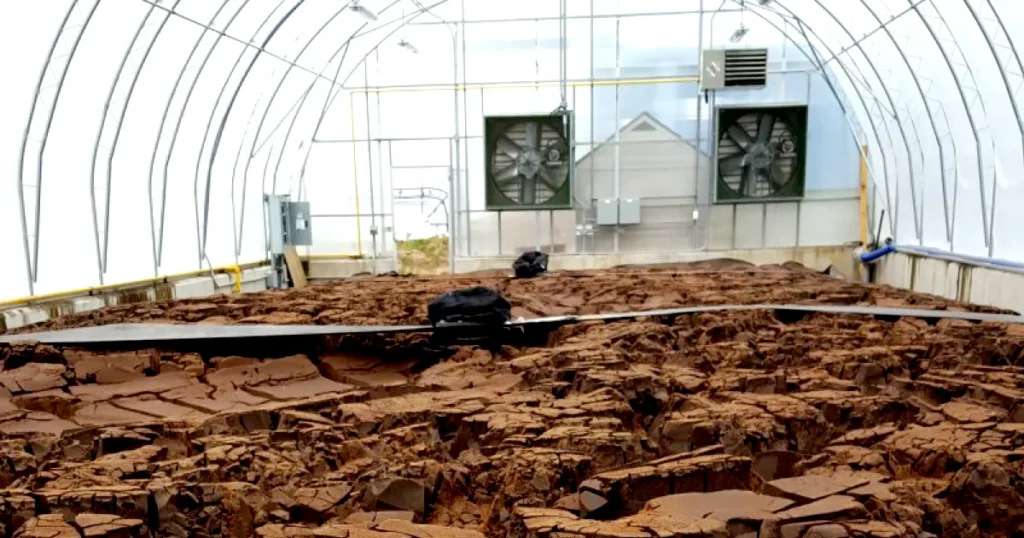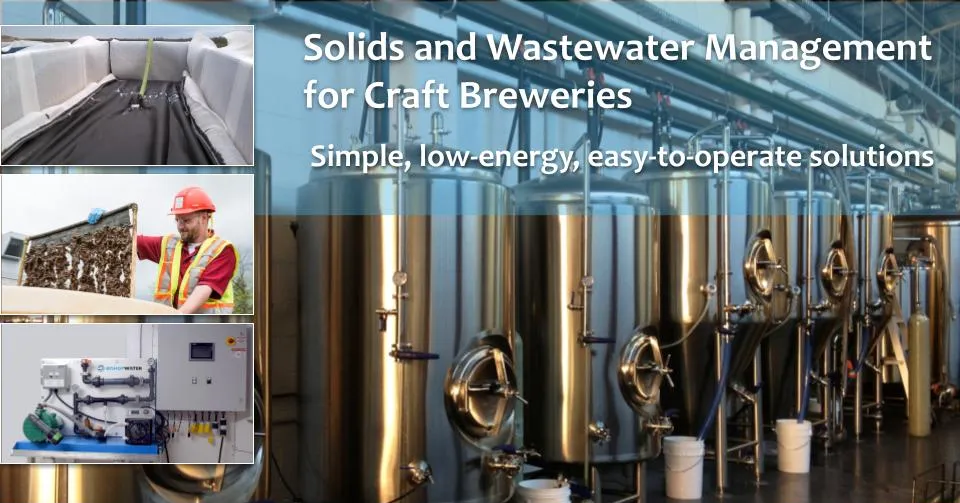
CASE STUDY
Township of North Glengarry chooses Geotube® technology for lagoon clean-out
The challenge:
The township of North Glengarry operates a four-lagoon cell system in the Village of Alexandria, Ontario for the management of sewage sludge. Many municipalities utilize lagoon systems across Ontario to manage sewage, however lagoons require maintenance and periodic sludge removal in order to operate effectively and efficiently on an ongoing basis. In 2011, the North Glengarry Council had decided it was time to begin a process to remove the sludge contained in one of the onsite lagoons.
When utilizing mechanical means to de-sludge lagoons, the traditional method is to completely empty the lagoon, leaving the client to pay for the removal of a high volume of liquid. Due to budget constraints the township required a more affordable, innovative solution which would complete the task just as effectively.
The solution:
Bishop Water partners Geo-dredging and Dewatering Solutions Inc. were chosen to undertake the project. Using the Geotube technology, Geo-dredging offers its clients the unique opportunity to remove, dewater and contain sludge all in one phase. However, disposal of the sludge can be done years later, allowing clients to spread the total project cost over a number of years. When the material is removed from the Geotube units for disposal it will range from 20-30% solids, greatly reducing the volume of material to be disposed of and the cost associated with transporting it.
In order to provide the township with a cost to undertake, representatives of Bishop Water, collected representative samples of the sludge contained in the lagoon. These samples were bench tested at Bishop Water laboratories in order to determine not only the average percent of solids of the material, but the best chemical and chemical dosage rates to condition the sludge for dewatering with Geotube units.
It was calculated that in order to remove the volume requested by the township, four Geotube units each measuring 60′ in circumference by 100′ long would be required. A proposal to undertake the project was issued in late July 2011 which was accepted by the council. The project commenced in September 2011. This would also provide additional capacity for subsequent sludge removal.
The construction:
Before the project could begin, a dewatering cell would have to be constructed on which the Geotube units could be deployed. The importance of the dewatering cell is to ensure that filtrate produced through dewatering can be captured and transferred back to the lagoon cell ensuring no discharge of filtrate to the environment.
The dewatering cell was constructed in an onsite decommissioned lagoon cell. Once the base of the cell was prepared an impermeable geo-membrane liner was installed to control the flow of the filtrate from the Geotube units. On top of the liner a non-woven geo-synthetic was installed to protect the liner from incurring any damage over the course of the project. Finally, Geotube filtration fabric was laid out in order to promote dewatering from the bottom of the bags. After the completion of the dewatering cell the Geotube units were deployed and connected to a manifold system capable of feeding all the units simultaneously or one at a time.
The performance:
Typically, every lagoon project offers its own unique challenges, however the project at Alexandria was completed quickly and without any unforeseen problems.
Geo-dredging and Dewatering were on site for a total of 5 days of pumping. Sludge was transferred to the Geotube units by a hydraulic dredge at a rate of 2000 to 2100 liters per minute. As the sludge was pumped to the bags it was conditioned inline by the Geo-Dredging and Dewatering Solutions custom designed polymer injection system. The automated nature of the system ensured optimal flocculation over the course of the project by reading the percent solids of the sludge every 15 seconds and automatically adjusting dosage rates. The system is one of a kind and specifically designed to maximize the efficiency of the Geotube technology.
Over the course of the project approximately 7500m3 of material was removed from the lagoon and dewatered by the Geotube units. While percent solids of the material varied depending on its location in the lagoon, the average was 3.75%. After just 5 days of pumping Geo-Dredging had met the needs of the client, dewatering in excess of 250 bone dry metric tons of material.
The Township has yet to commission the removal of the solids from the Geotube units and the bags remain outside. By allowing the units to sit through the freeze thaw cycle the volume inside the Geotube will further reduce. The Township intends to refill these Geotube containers next year and possibly again in 2013. The project went so well that the Township intends to deploy more Geotube units at the site as part of their long term sludge management strategy.
The project undertaken by Bishop Water and Geo-dredging in Alexandria is just one example of how Geotube units are being used successfully across Ontario for lagoon de-watering and remediation projects.







